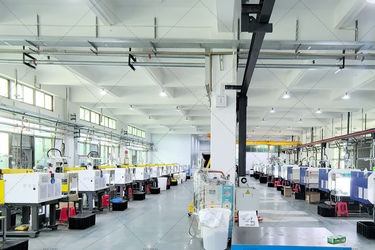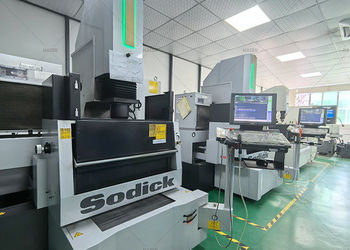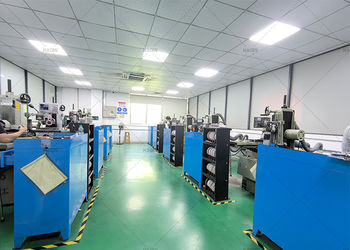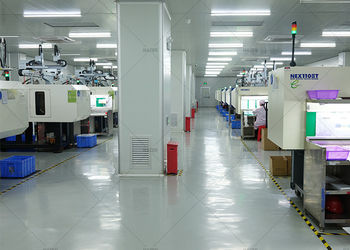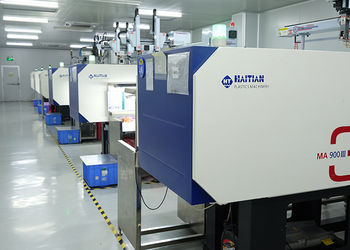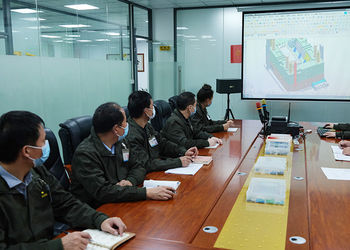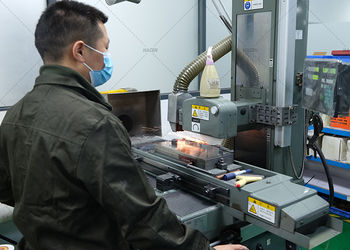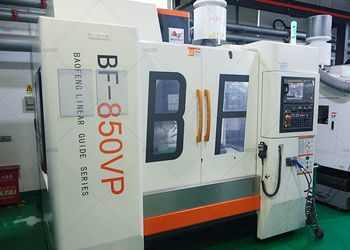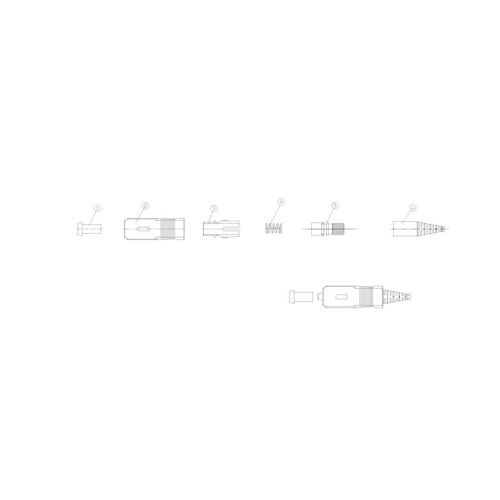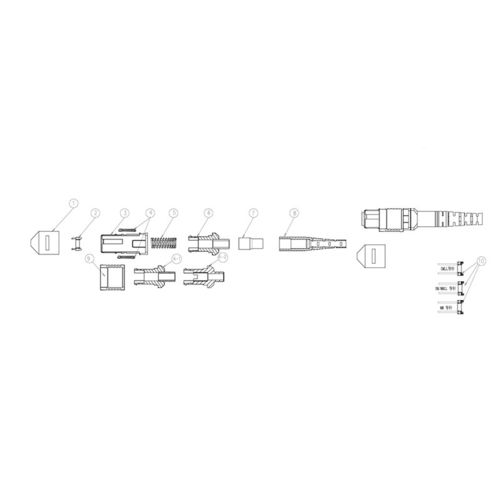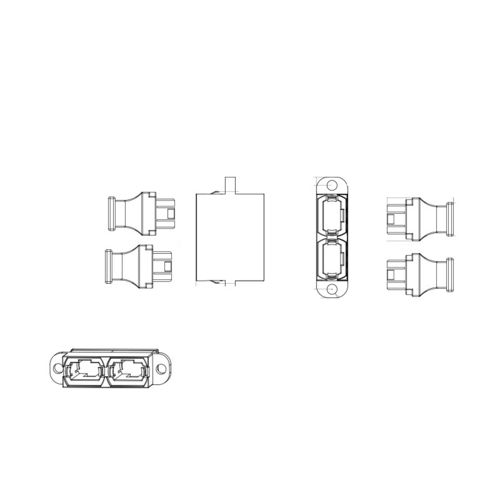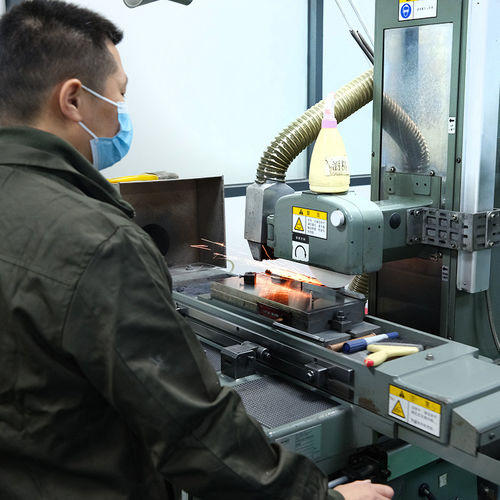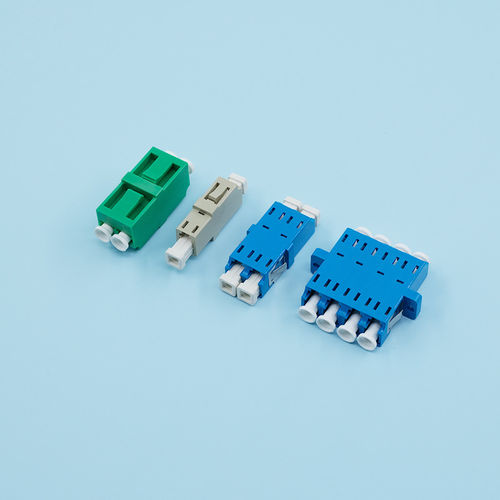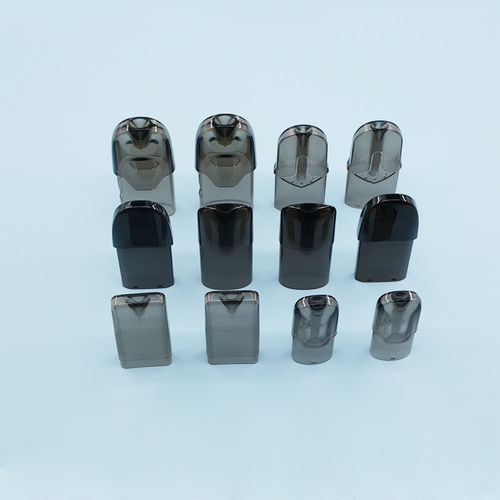We Hecheng take pride in delivering top-quality fiber optic solutions that exceed industry standards. Here’s why we stand out in the competitive market:
1. In-House R&D Capabilities
Innovation is at the core of what we do. Our experienced R&D team works tirelessly to create customized solutions that meet the ever-evolving demands of the fiber optic industry. the current general connectors we sell all are with Patent,Whether you need a new product design or specific modifications to existing models, we have the flexibility to bring your vision to life.
2. Complete OEM Capabilities
We offer full OEM services, backed by our own tooling shop and advanced injection molding technology. This allows us to produce high-precision, high-quality connectors and adapters tailored to your exact specifications. With our in-house capabilities, we ensure that your orders are delivered on time, every time, and with the utmost accuracy.
3. Strict Quality Control
Quality is our top priority. Our factory adheres to international ISO standards, ensuring that every product undergoes rigorous testing for performance, durability, and safety. In addition to ISO certifications, our products are also tested for UL 94V-0 and RoHs ,Reach, so you can trust that they meet the highest industry standards.
4. High-Volume Production Capacity
We are proud to be able to meet the demands of large-scale projects. with more than 100set of injection machines,Our production capacity allows us to ship over 1 million MPO sets every month, ensuring that we can fulfill bulk orders quickly and efficiently. Whether you need a small batch or a large order, we are equipped to handle it with the same level of precision and attention to detail.
With the advancement of AI, we are moving beyond just providing standard connectors and adapters. Our focus is on delivering customized solutions tailored to meet the unique needs of our customers. We aim to provide high-precision, high-performance, and high-density products, ensuring exceptional quality and innovation. We are not here to compete in the race for lower prices, because it wont lasts long,but to deliver sustainable solutions that stand out in the market. more than connectors, we specialize in personalized injection-molded components for the data centers, offering highly customized designs that cater to specific customer requirements.
High-Density Support: MPO adapters are typically used for 12, 24, or 48-fiber configurations, making them ideal for high-density applications where space is limited, such as in data centers.
Polarity: MPO adapters are designed to accommodate both Type A and Type B polarity, which ensures that the fibers align correctly for signal transmission. It's essential to match the polarity of the adapter with the polarity of the fiber network to ensure proper performance.
Low Insertion Loss: Good quality MPO adapters feature low insertion loss, which means that the signal will pass through the adapter with minimal attenuation. This is crucial for maintaining high performance in fiber optic networks.
Durability and Material: MPO adapters are typically made from high-quality materials like metal or plastic. The inner ferrules or alignment sleeves are often made of ceramic or metal to ensure precision and durability, ensuring the fibers are aligned accurately.
Keying Mechanism: MPO adapters may include a keying mechanism to prevent mismatching of fiber connectors. This ensures the correct connection between two fibers, maintaining the integrity and performance of the link.
Single-Mode and Multi-Mode: MPO adapters can support both single-mode and multi-mode fibers. Single-mode MPO adapters are used for long-distance transmission (usually with a laser-based source), while multi-mode adapters are used for short-distance applications (using LED or VCSEL-based sources).
Gender and Connector Orientation: MPO adapters come in different gender configurations (male-to-female, male-to-male, or female-to-female) and can support both straight-through and crossed orientations (reversed polarity). Selecting the right type is essential to ensure proper connectivity.
The MPO (Multi-Fiber Push-On) connector is a high-density, cost-effective solution widely used in data centers and high-speed networks, offering the ability to connect 4,8, 12, 16,24, or more fibers in one connector, saving space, reducing installation time with plug-and-play options, supporting high-bandwidth applications like 40G, 100G, and 400G, and ensuring reliability with low insertion loss and high return loss, while also simplifying cable management, improving airflow, and supporting future scalability, making it ideal for compact environments, parallel optics, and applications requiring fast, efficient, and reliable performance across enterprise networks, telecommunications, and high-performance computing systems.
The MPO can be in different types
Different materials can significantly impact the performance and quality of the product.
A variety of color options are available, which facilitate easier installation and future modifications.
Flexible combination options provide versatility to meet diverse needs.
Although it may appear to be a small connector, its functionality is highly powerful. If you have specific requirements, please contact us. We offer a range of solutions to suit your needs.
SC connectors are popular in fiber optic networks due to their simplicity, reliability, and robust design. They feature a push-pull mechanism for easy insertion and removal, ensuring secure and stable connections. SC connectors are cost-effective and suitable for both single-mode and multimode fibers, making them versatile for various applications. Their square-shaped design allows for high-density installations and easy alignment in patch panels. SC connectors offer low insertion loss and high return loss, ensuring excellent signal performance. Widely used in telecommunications, data centers, and CATV networks, SC connectors are a trusted choice for reliable and efficient fiber optic connections.
1. Design and Features
Push-Pull Design: SC connectors use a simple push-pull latching mechanism, which makes them easy to insert and remove from the corresponding receptacle.
Standard Size: SC connectors are typically rectangular and larger than small form-factor connectors like LC. This gives them a solid and reliable connection, especially in industrial environments.
2. Single-Mode and Multi-Mode Compatibility
SC connectors are available in both single-mode (SM) and multi-mode (MM) versions.
3. High Performance
SC connectors are with low insertion loss and high return loss, which results in a reliable and stable transmission of signals.
The ceramic ferrules used in SC connectors provide precise alignment for the fiber core, ensuring minimal signal degradation and high optical performance.
6. Polishing Options
SC connectors can be finished with different polishing options to optimize performance:
UPC (Ultra Physical Contact): Provides low insertion loss and high return loss, typically used in single-mode applications.
APC (Angled Physical Contact): Used for minimizing back reflection in single-mode systems by providing an angled polish to the fiber end-face.
LC connectors are widely used in fiber optic networks due to their compact size, high performance, and reliability. They feature a small form factor, allowing for high-density installations, saving space in patch panels and network equipment. LC connectors are easy to use, with a push-pull mechanism for quick and secure connections. They provide low insertion loss and high return loss, ensuring excellent signal quality. Their compatibility with single-mode and multimode fibers makes them versatile for various applications, including data centers, telecommunications, and enterprise networks. Additionally, LC connectors support high-speed transmission, making them ideal for modern, high-bandwidth requirements.
1. LC Connectors come in both single-mode and multi-mode types, which can typically be distinguished by their color. For example, blue is used for single-mode, while green or beige is commonly used for multi-mode.
2. LC connectors are available in simplex and duplex configurations, and can also be equipped with a clip-on cover for added protection and organization.
3.In addition to the standard connectors, there are now polarity-swappable uniboot connectors, which significantly save space.
Although these connectors are small in size, their functionality is highly significant. Not all injection molding manufacturers can meet the precise requirements for these connectors, so it’s crucial to carefully select your supplier.
All of our LC connectors are meet RoHs2.0,New REACH and UL94 V-0 standard.all size are in accordance with IEC61754-20 type of LC connector family.we welcome you to take samples for testing.
Uniboot connectors are a type of duplex fiber optic cable where both fibers (for transmit and receive signals) are contained within a single cable jacket. This compact design helps to reduce cable clutter and improve space efficiency in patch panels or other fiber optic infrastructures.
Polarity reversal refers to the ability to switch the transmit (TX) and receive (RX) fiber paths without needing to physically re-terminate or replace the cables. This is achieved through a simple mechanical switch within the uniboot connector housing, which allows the fibers to be easily swapped.
Then How to Choose Uniboot Connectors with Polarity Reversal
Connector Type: Uniboot connectors are available in various types, including LC, SC, and MTP/MPO connectors, depending on the system requirements.
Polarity Standards: Ensure the uniboot connectors you select support the appropriate polarity standards for your application. There are two main standards for duplex fiber polarity: Type A and Type B.
Type A: Transmit (TX) on pin 1, Receive (RX) on pin 2.
Type B: Transmit (TX) on pin 2, Receive (RX) on pin 1.
Polarity Reversal Mechanism: Not all uniboot connectors may support polarity reversal; ensure the connectors you choose are designed for this function.
MPO (Multi-fiber Push-On) adapter is a device used to connect two MPO connectors together. MPO connectors are typically used in high-density fiber optic networks to handle multiple fibers within a single connector.
MPO connectors are designed to accommodate 8, 12, 24, or 48 fibers in a single connector, making them ideal for high-bandwidth, high-density environments such as data centers, telecom networks, and high-performance computing systems.
Key Types of MPO Adapters
MPO/MPO Adapter: The most common type of MPO adapter that connects two MPO connectors directly.
MPO/LC Adapter: This type of adapter is used when converting from an MPO connector to a smaller LC connector. It is commonly used to transition from high-density backbone cabling (MPO) to smaller form-factor connectors (LC) for end devices such as switches and routers.
MPO/SC Adapter: Similar to the MPO/LC adapter, it is used to convert MPO to SC connectors.
MPO/MTP Adapter: MTP (Multipath Termination Push-on) connectors are an improved version of MPO, offering enhanced performance. MTP-to-MTP adapters provide connections for high-density, high-performance fiber optic networks.
We have detailed specifications about the adapters,kindly contact us if you need more information.
SC (Subscriber Connector) adapter is a device used to connect two SC fiber optic connectors or to interface between different types of fiber optic connectors.
Types of SC Adapters
SC/SC Adapter: The most common type, used to connect two SC fiber optic connectors directly. It can support both single-mode and multi-mode fibers.
SC/LC Adapter: An adapter used to connect an SC fiber optic connector to an LC connector. This type is widely used to convert from SC to LC in high-density applications where space is a concern.
SC/ST Adapter: Used to connect SC connectors to ST connectors. ST connectors are another common fiber optic connector type, particularly in older networks.
SC/MTP Adapter: This adapter is used when transitioning from SC connectors to MTP connectors, typically in high-density or high-performance networks that utilize MTP's larger fiber capacity.
SC/MPO Adapter: Similar to SC/MTP adapters, but used specifically for MPO connectors, which are often used in high-density, multi-fiber setups.







